This article was medically reviewed by Luba Lee, FNP-BC, MS and by wikiHow staff writer, Jennifer Mueller, JD. Luba Lee, FNP-BC is a Board-Certified Family Nurse Practitioner (FNP) and educator in Tennessee with over a decade of clinical experience. Luba has certifications in Pediatric Advanced Life Support (PALS), Emergency Medicine, Advanced Cardiac Life Support (ACLS), Team Building, and Critical Care Nursing. She received her Master of Science in Nursing (MSN) from the University of Tennessee in 2006.
There are 15 references cited in this article, which can be found at the bottom of the page.
This article has been viewed 108,478 times.
Your quadriceps tendon wraps around your knee cap and connects your quadriceps muscles on the front of your thigh to your lower leg bone. This tendon can become inflamed, typically as a result of overuse of the knee through activities that involve a lot of running and jumping. Symptoms include pain in your lower thigh just over your kneecap, particularly when using your knee, and joint stiffness, particularly in the morning. Surgery is rarely needed to treat quadriceps tendonitis, also known as “jumper’s knee.” Usually, your condition will improve with targeted exercises or physical therapy to strengthen your quadriceps, correct muscle imbalances, and improve the function of your knee joint.[1]
Steps
Reducing Pain and Inflammation
-
1Take an over-the-counter anti-inflammatory. Immediately after injury and for the first few days afterward, non-steroidal anti-inflammatory drugs (NSAIDs) can help reduce pain and inflammation in your tendon. [2]
- If you continue to have pain and inflammation after several days of taking these medications, see a doctor as soon as possible. You may have a more serious injury that requires different treatment.
-
2Tape or brace your kneecap while exercising. Compression tape or knee braces, available at sporting goods stores or pharmacies, may keep your kneecap in better alignment so you don't have pain while exercising.[3]
- The brace used here is a softer brace that you slide up your leg and over your knee. They typically have a hole in the front for your kneecap to stick out.
- This sort of treatment is more appropriate if you only have pain when using your knee. If you also experience pain while resting, it's a better idea to take a break from activity for a few days.
Advertisement -
3Follow the RICE protocol. RICE stands for Rest, Ice, Compression, and Elevation, and this is the first line of treatment for quadriceps tendonitis.[4] Wrap a compression bandage around your knee to reduce swelling and place an ice pack wrapped in a towel on top of it. Then lay on a comfortable flat surface, such as a bed or couch, with your leg and knee raised.
- Ice your knee for 20 minutes every 2 or 3 hours in the first 2 or 3 days after the injury. Using ice for more than 20 minutes at a time can burn your skin or result in nerve damage. Never fall asleep with an ice pack on.
- This treatment is beneficial for the treatment of quadriceps tendonitis within the first 48 to 72 hours following the injury or initial onset of pain. If you still have pain and inflammation, talk to a doctor or physiotherapist.
-
4Apply heat after inflammation has subsided. After 3 or 4 days of RICE therapy, the inflammation in your knee should be reduced to a significant degree. Switch from ice to heat to promote circulation in your knee and encourage the continued healing process.[5]
- As with ice, don't apply heat for more than 20 minutes at a time. Warmth can be applied for longer, but use your best judgment. If your skin starts to redden or feels painful to the touch, remove the heat source.
- Soaking in a warm bath is a good way to provide healing warmth to your knee. Moist warmth works better than dry warmth because you don't risk dehydrating your skin.
-
5Adjust your training schedule to prevent overuse. Particularly if you're training for a specific event, you may be inclined to return to the same level of activity once your knee starts to feel better. However, not allowing adequate time for recovery can worsen the injury.[6]
- If you have to take a break from training or exercise, get back into it slowly and gradually. You could further damage your knee by returning to activity at the same level you were at before the injury.
- If you have a coach or trainer, work with them to develop a training regimen that will get you ready for upcoming events without risking further injury to your quadriceps tendon, or to surrounding muscles and tendons.
-
6Avoid activities that place stress on the quadriceps tendon. What you do while recovering from quadriceps tendonitis is just as important as how long and how often you do it. Activities such as running and jumping can further aggravate your condition.[7]
- If these activities are an unavoidable part of your training, start slow under controlled conditions. For example, if you are a soccer player recovering from quadriceps tendonitis, return to training by running on a padded treadmill rather than on the uneven terrain of the soccer pitch.
- If you feel pain with any of these activities, stop and provide RICE therapy to your knee. You may also want to switch to other training or conditioning exercises that don't put undue strain on your knee or your quadriceps tendon.
Improving Knee Function
-
1Evaluate your choice of footwear. If your shoes don't fit properly or are inappropriate for the surface where you're exercising, they can put undue stress on your joints and tendons. Make sure you're wearing the right shoes for your activity, and that they fit well and are in good repair.[8]
- If the tread of your shoes is worn, it may be time to get new ones. Most shoes are only "good" for a particular distance or amount of time. After that, any support and benefits you got when the shoes were newer will disappear.
- If it suits your budget, go to a specialty store and get specially fitted for shoes that will best support your feet while performing your chosen activity.
-
2Schedule a physical exam to get a diagnosis. To truly treat quadriceps tendonitis, you need a diagnosis and treatment plan from a qualified doctor or physiotherapist. Quadriceps tendonitis is not a condition that typically just gets better on its own.[9]
- The doctor will ask you questions to get a complete understanding of your knee problems, including a history of your knee pain, any prior injuries, and when you first started experiencing issues.
- Most times, quadriceps tendonitis is diagnosed based on your history and a physical exam.
- If necessary, the doctor may have X-rays or MRIs done on your knee to further assess your condition before making a final diagnosis.
-
3Undergo physical therapy for 4 to 6 weeks. Recurrence of quadriceps tendonitis occurs more frequently when athletes don't allow enough time for recovery and rehabilitation before resuming their previous level of activity. Your tendon needs physical therapy to fully heal.[10]
- A physical therapist will prescribe exercises designed specifically for your injury, your normal activity level, and the activities to which you want to return.
- If you're a more serious athlete who regularly works with a trainer or coach, your physical therapist may work with them to develop your rehabilitation plan.
-
4Try a single-leg bridge to identify muscle imbalances. Lay on your back. Keep one leg straight, and bend the other so that your foot is flat on the floor. Activate your core and lift your torso until your body forms a straight line from your knee down to your shoulders. Hold the position for 10 seconds and think about which muscles you feel working the most.[11]
- The muscles you should feel working the hardest are your glutes. If you feel the exercise more in your back, hamstrings, or quads, this means one of two things: either you are compensating for a muscle imbalance, or you're not doing the exercise with correct form.
- Check and correct your form as necessary, and do the exercise a few more times to see if you get the same result. If you still feel the exercise somewhere other than in your glutes, try some exercises to strengthen your glutes.
-
5Retrain your gait. Muscle imbalances can cause an uneven gait that redistributes your body weight, placing more strain on the joints of one side of your body. If you're working with a physical therapist, they will assess your gait and see if you need assistance in this area.[12]
- Retraining your gait is not a short-term project. Particularly if you've gotten used to walking a certain way over the course of several years, it can take a long time to fix problems.
- In addition to gait retraining, you'll also have to strengthen opposing muscles to correct the imbalance.
Increasing Quadriceps Strength and Flexibility
-
1Warm up before any activity. Especially if you are recovering from tendonitis, warm up is essential to prevent further strain or injury. Even if you're just walking, engage in a little warm-up to get blood flowing to your muscles and get your body ready for activity.[13]
- Your warm-up should directly cater to the activity you're going to be doing. if you're running, your warm-up will be different than if you're lifting weights.
-
2Start with wall sits. Stand with your feet about thigh-length in front of a wall, pressing your back into the wall. Keep your shoulders rolled back so that your shoulder blades are tucked in along your spine. Lower your torso so that your thighs are perpendicular to the floor. Your knees should be at right angles.[14]
- Hold the "sitting" position for 10 to 20 seconds, or as long as you can do so without knee pain. Raise back up and repeat 5 to 10 times, or as many as you can do comfortably.
- This static exercise will gradually build strength in your quadriceps muscle, and is safe to do in most cases even while recovering from quadriceps tendonitis.
-
3Do static quadriceps contractions. Lay down on a flat, sturdy surface with your affected leg extended in front of you, and your other leg bent at the knee. Place a hand on your thigh above your knee so you can feel the contraction. Then contract your quadriceps muscle by pulling your foot back toward you and hold the contraction for about 5 seconds.
- Release and repeat 5 to 10 times if you can do so without pain or discomfort. You can do this exercise 2 or 3 times a day.
- Static quadriceps contractions are good for increasing strength in your quadriceps if your tendon is too injured to bear weight.
-
4Stretch your quadriceps with the "runner's stretch." Stand behind a chair, table, or another stable surface you can grip for balance. Lift the foot of your affected leg and grasp the top of your foot behind your buttock (or as far as you can comfortably go). Press your foot towards your buttock while breathing deeply.[15]
- Hold the stretch for 10 to 20 seconds, then release. Make sure to do the other side, even though it isn't injured. You don't want to create an imbalance.
- You can do this stretch 2 or 3 times a day, or whenever your leg feels tight or your knee feels stiff. Don't press your foot further than you can without pain or discomfort.
-
5Go swimming instead of running. Swimming is a low-impact exercise that you can do even while recovering from quadriceps tendonitis. It builds strength in your quads as well as the surrounding muscles to help you avoid quadriceps tendonitis in the future.[16]
- Swimming works your entire lower body, so can help correct muscle imbalances you may have developed.
-
6Try a yoga class. Yoga is beneficial for all joints, and can also strengthen your knees and leg muscles. A gentle yoga class will gradually strengthen your leg muscles and core while also increasing flexibility and range of motion in your joints.[17]
- When you hold a yoga pose, your body sends blood and oxygen to the areas working the hardest. This can reduce inflammation and promote the healing process.
- Make sure you choose a class that emphasizes form and proper alignment and provides accommodations if you can't get into the full pose right away.
References
- ↑ https://journals.sagepub.com/doi/abs/10.1177/036354658301100202
- ↑ https://www.hss.edu/condition-list_tendonitis.asp
- ↑ https://kidshealth.org/en/parents/jumpers-knee.html
- ↑ https://www.arthritis.org/diseases/tendinitis
- ↑ http://www.sportsinjuryclinic.net/sport-injuries/knee-pain/quadriceps-tendinopathy
- ↑ https://www.arthritis.org/diseases/tendinitis
- ↑ https://www.rheumatologyadvisor.com/home/decision-support-in-medicine/rheumatology/jumpers-knee/
- ↑ https://www.aafp.org/afp/1999/1101/p2012.html
- ↑ https://www.hopkinsmedicine.org/health/conditions-and-diseases/patellar-tendonitis-jumpers-knee
- ↑ http://www.physio.co.uk/what-we-treat/musculoskeletal/conditions/knee/knee-tendinopathy/quadriceps-tendinopathy.php
- ↑ https://www.marathontrainingacademy.com/wp-content/uploads/2016/11/Strengthening-and-Rehabilitation-Exercises-for-the-Quadriceps.pdf
- ↑ https://kinetesisspineandjoint.ca/injury-library/quadriceps-tendinopathy/
- ↑ https://www.nhs.uk/conditions/tendonitis/
- ↑ https://www.marathontrainingacademy.com/wp-content/uploads/2016/11/Strengthening-and-Rehabilitation-Exercises-for-the-Quadriceps.pdf
- ↑ https://orthopedicassociates.org/common-quadriceps-problems-and-when-you-should-visit-a-doctor/
- ↑ https://www.physio-pedia.com/Proximal_Hamstring_Tendinopathy
- ↑ https://www.hopkinsmedicine.org/health/wellness-and-prevention/9-benefits-of-yoga
About This Article
To treat quadricep tendonitis, focus on reducing the pain in your leg and building up your strength and flexibility. Take an over-the-counter anti-inflammatory like aspirin or ibuprofen immediately after your injury to reduce the pain. Ice your knee for 20 minutes every few hours during the first 2 to 3 days, and try to rest your leg as much as possible. If the pain persists after several days, see your doctor as soon as possible for a diagnosis. Otherwise, start applying heat to your knee after 3 to 4 days, like taking a hot bath, which will encourage healing. When you feel ready to start exercising again, start off slowly, since going too hard can worsen your injury. Always warm-up before you start exercising to improve muscle flexibility. For tips from our Medical co-author on how to treat recurring quadricep tendinitis, read on!
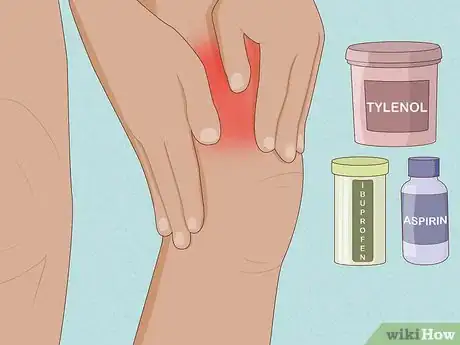
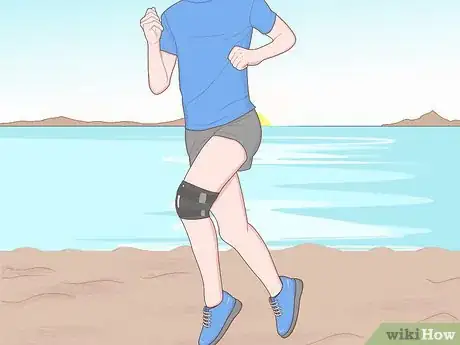
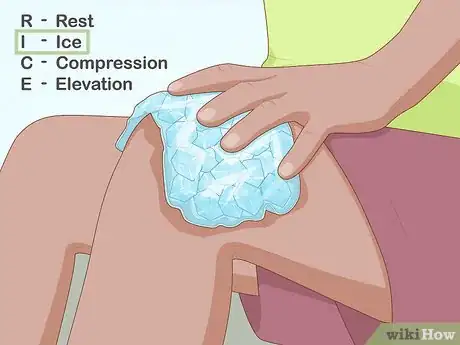

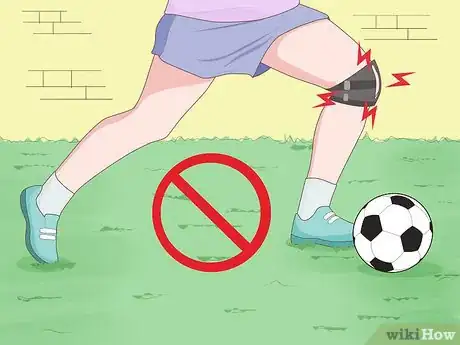
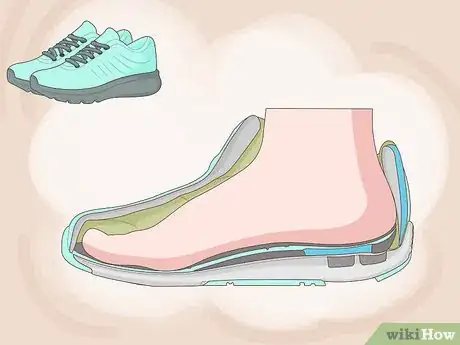

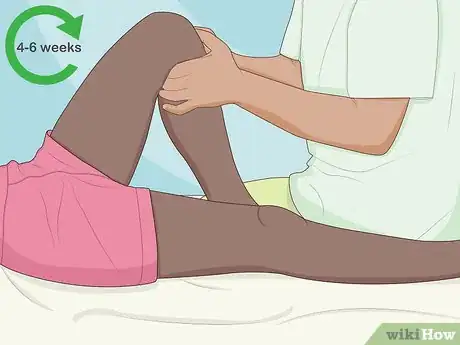
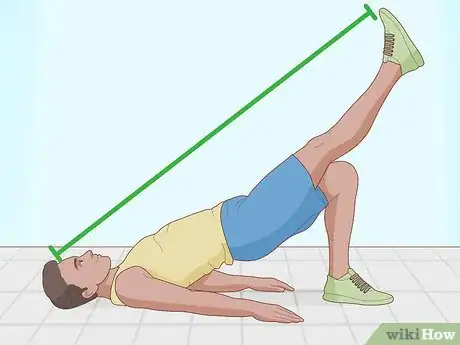


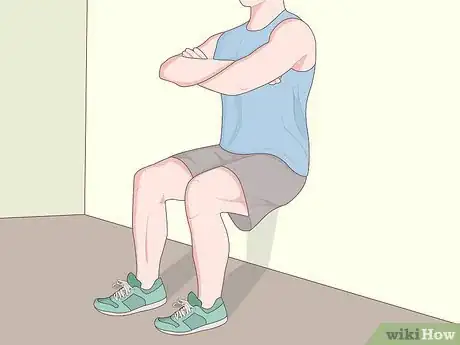

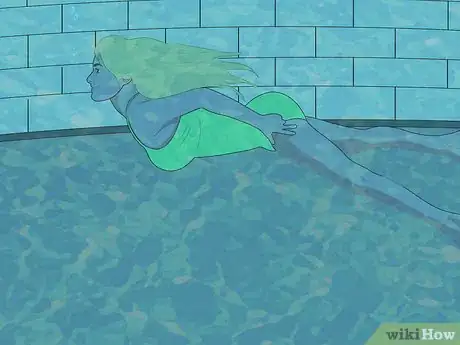
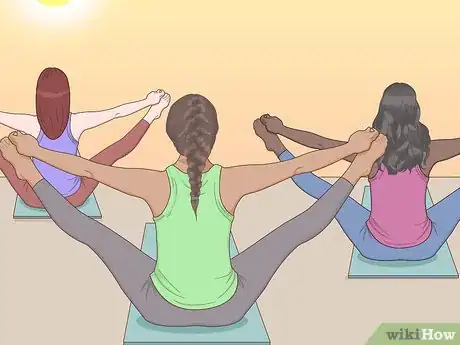
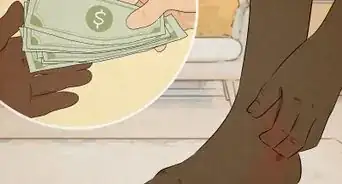
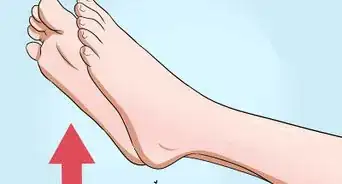
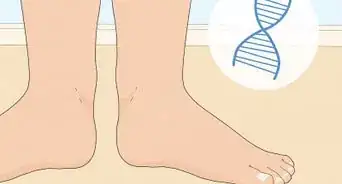

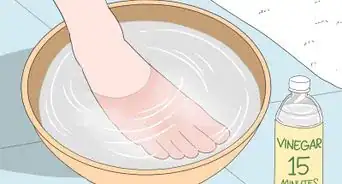
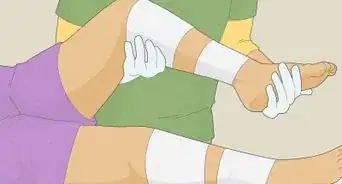
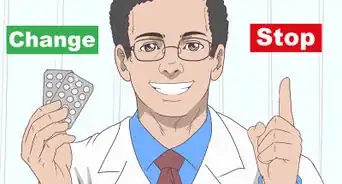

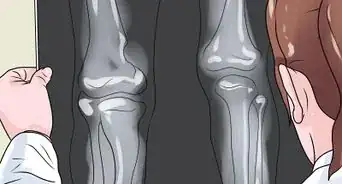

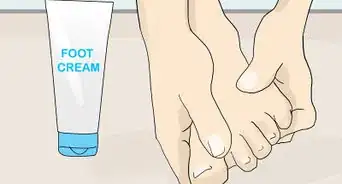
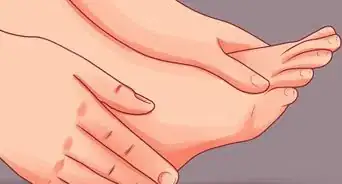
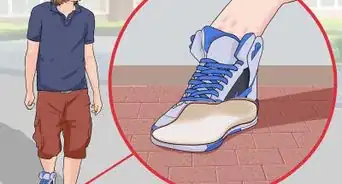










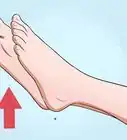

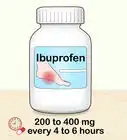



































Medical Disclaimer
The content of this article is not intended to be a substitute for professional medical advice, examination, diagnosis, or treatment. You should always contact your doctor or other qualified healthcare professional before starting, changing, or stopping any kind of health treatment.
Read More...